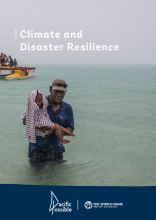Climate and Disaster Resilience
This report uses these generic methods to provide recommendations for climate resilient development in the PICs in the following sectors: coastal protection, flood management, water resources management, protection of infrastructure against changes in temperature and precipitations, protection of buildings against cyclone winds, and adaptation in the agriculture sector.A new World Bank report has highlighted the need for Pacific Island countries to better incorporate climate and disaster risk management into planning and development, while proposing priority investments and policies to boost resilience to the year 2040.Launched in Fiji today at the Symposium on Climate Change Adaptation in the Pacific Region, Pacific Possible: Climate and Disaster Resilience considers the economic costs of climate adaptation, and proposes adaptation strategies for areas including infrastructure and buildings, coastal protection, water resources, flooding and agriculture, with special consideration given to the unique challenges of atoll islands.“Climate change and extreme weather events have the potential to adversely affect coastal zones, water resources, health, infrastructure, agriculture and food security,” said Denis Jordy, Senior Environmental Specialist at the World Bank. “And if new investments are not properly planned, they risk exacerbating the impacts of natural hazards and climate change by increasing the vulnerability and exposure of those at risk.”The report provides evidence for policymakers considering incorporating climate adaptation activities into infrastructure development, demonstrating that taking steps now to ensure that buildings and construction activities can better withstand climate change-related events will reduce impacts in future years. For example, the report states that retrofitting buildings to withstand future cyclones can decrease expected losses by between 35 and 50 percent, and suggests a targeted approach to retrofitting to minimize costs.
Files
Document Tabs

